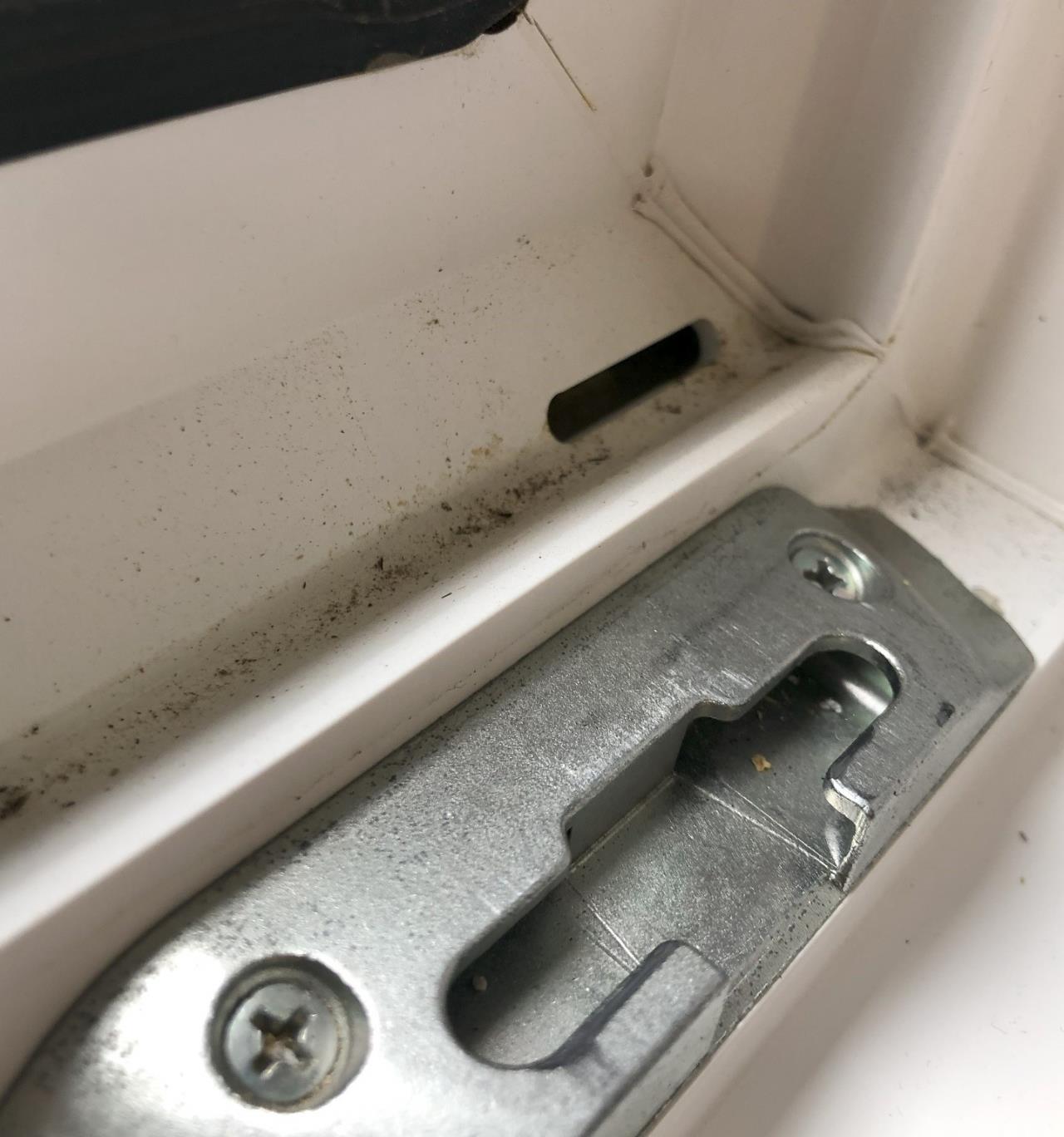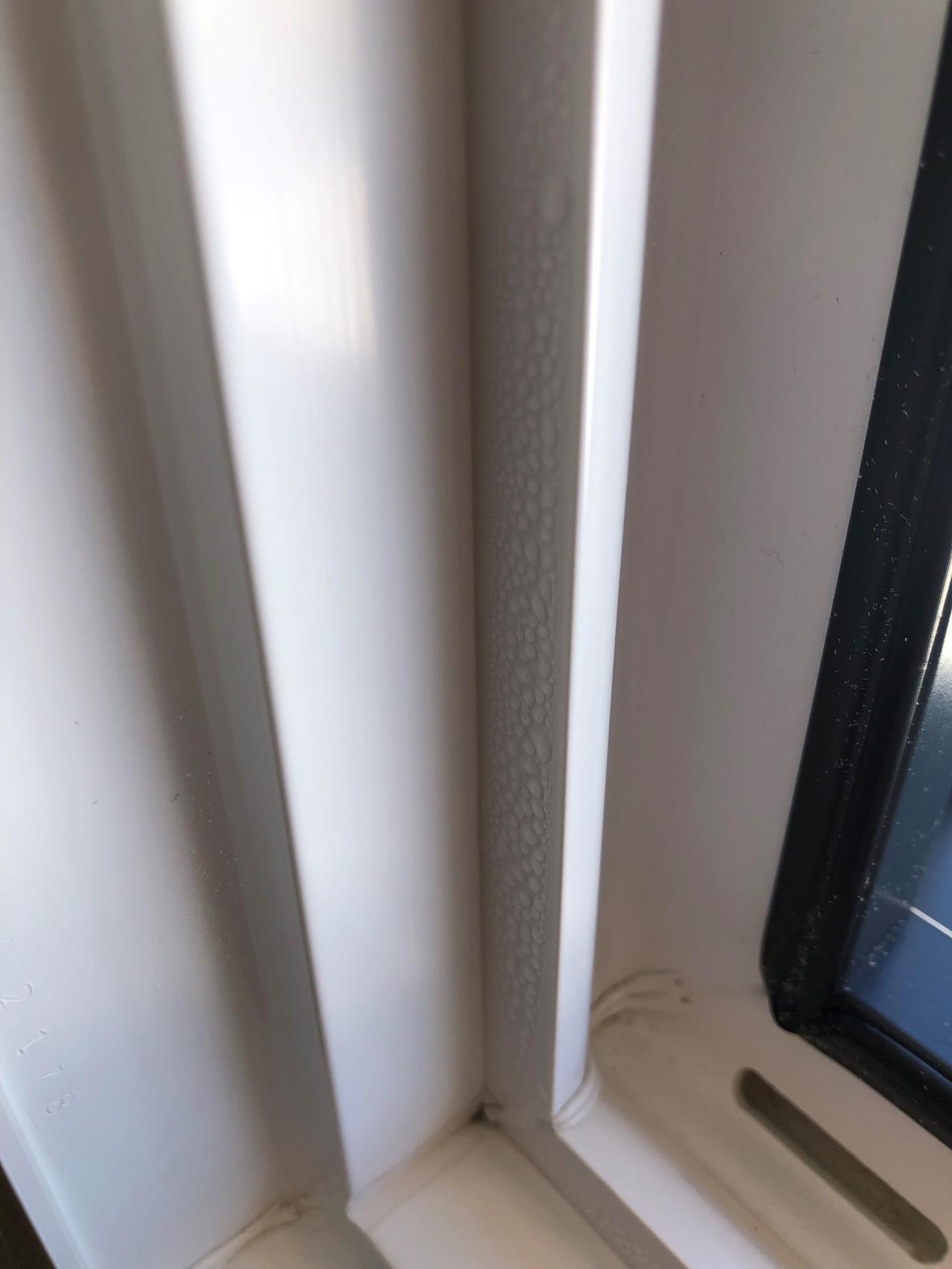Kondenswasser/schimmel in Fensterstock - Seite 15
|
|
||
|
Es sollte eigentlich kein Geheimnis mehr sein: Häuser ohne ausreichenden Luftwechsel werden abgesehen vom gesundheitlich negativen Aspekt immer irgendwo Probleme machen. Ich habe vor kurzem mit einem Bausachverständigen gesprochen. Er meinte: die Mehrzahl der Professionisten sind noch immer auf einem Auge blind, versuchen ihre Leistungen zu verkaufen und betreiben bestenfalls Symptombekämpfung, statt endlich die Ursache an der Wurzel zu packen. 2/3 der Schadensfälle sind in den Gutachten inzwischen: Baumangel durch unzureichenden Luftwechsel und/oder falsche Beheizung. Daraus sollten wir endlich lernen! Die Grundproblematik ist, dass es zu wenige fachkundige Bauplaner gibt, die ein stimmiges Gesamtkonzept für Bauphysik und Haustechnik erstellen können. Wenn dann solche "Mängel" auftreten, wird gerne ein "falsches Nutzerverhalten" ausgewiesen.
|
||
|
||
|
Hallo Saprfux, hier gibt es dazu Erfahrungen und Preise: Kondenswasser/schimmel in Fensterstock |
||
|
||
|
Hello, we have the same problem as most of the users here, that on the upper floor of the window inside the profile the middle seal is located, it condenses. The windows are Internorm KF520 PVC-ALU. So far they have changed the seals (same type) but the situation is the same. They currently don't have any solution, or they are unresponsive to, this. They say it's normal. Yesterday I switched off the central recuperator, in case something was different (in terms of incorrect pressures in the house) but the situation is the same. Did someone found the solution for this crap windows? BR from Slovenia  |
||
|
||
|
Hello riflex, pretty much all the information has already been posted here to solve the problem. Let me summarize it again: every house needs planning. This starts with the drafting of the house plan, the submission plan and, ideally, with the detailed plan. In addition, an engineer's ID card must also be created in Austria. When the energy certificate is created, the energy losses are also determined. In Austria, two variants of ventilation are possible: window ventilation or controlled living room ventilation. And this is the problem begins, which Leitwolf described very well. Although the ventilation is planned for the paper, it is not explained to the user or is explained inadequately. With the result that the air exchange rate required for the house is not maintained. This also increases the vapor pressure in the room, which escapes to the outside through joints. In addition, we are building much more densely than is required by the building law. To solve this problem, we either have to ventilate according to the planning specified in the energy certificate or make the building shell more leaky so that the vapor pressure can escape. Your problem now is the situation that you have a house with the upper floor and most likely a staircase that does not separate the upper floor and the upper floor. This creates a thermal in the house that rises upwards. In nature, clouds form, in the house the warm, moist air hits cold surfaces and condenses (in old buildings, this is usually the outside corners of the wall). You probably don't have controlled window ventilation. Therefore, please check the room climate with a hygrometer and ventilate as needed. If you start doing this consistently now, it should be fine until the beginning of December. Replacing the windownseal doesn't solve the problem, just lowering the vapor pressure |
||
|
||
|
The staircase is separate from the main part of the ground floor and upper floor. The staircase on both floors is located in a separate hallway. We do not have controlled window ventilation, but we have central ventilation with Zhender comfoq 350. It works with speed 200m3/h. According to the plans, the house has 330m3/h of intake and 300m3/h of exhaust (the remaining 30m3/h) is in the garage. Because of this difference, today I set the exhaust to 45% and the supply to 39%. The vacuum was already set before, but I increased it today and we'll see. I also increased the pressure on the seals on one window. Some Internorm dealers say that the window is properly sealed. The outer seal is intended for protection against rain (it is not 100% sealed), the middle seal it condenses is intended for sound dampening ("100" seal), and the inner seal is for airtightness ("100" seal). They say that I should remove the middle seal at the top like the outer one, so that the air will circulate. |
||
|
||
|
You have a supply air of 330m3/h and an exhaust air of 300m3/h in the room. this means that you have a surplus of 30m3/h. This excess now escapes to the outside via joints. As long as you don't have more exhaust air than supply air, there will always be condensation in the rebate area. The problem with condensation on the window is always that everyone thinks, that the window has something. the opposite is the case. It almost always fails due to the room climate and vapor pressure. that should also be taken into account. |
||
|
||
but it was the same when the ventilation was turned off for a day. now I set for the test supply air a little less than it would have been unified  |
||
|
||
|
tries to regulate the ventilation so that the negative pressure is reduced. |
||
|
||
|
It will take me few days to test. but @Squawvally why did condensation still there when I turned of the recuperator for 1 day? Befor I turned it of I am dried all condenzation... |
||
|
||
|
Condensation forms because warm, moist air hits colder surfaces. You can also describe it as saying that the vapor pressure on the room side hits cold surfaces on the way out |
||
|
||
|
that's right, then the problem is probably in the sealing that the warm internal air passes between the seals to the outside... or in the ventilation and I need to create a small negative pressure in the house. I'm waiting for lower temperature for test negative pressure. |
||
|
||
|
It is a misconception that the windows have to be tight. Windows have a classified air permeability. This means that there is usually no problem until the point in time when the outside temperatures are warm. From the cold season onwards, warm, moist air arrives.... (see above). As long as this is not understood, any further discussion is in vain |
||
|
||
 Das Problem liegt einfach daran das die genannten Fenster Fehlkonstruktionen sind und der Hersteller natürlich alle Fehler von sich weist. Der nächste Konstruktionsfehler sind die zu hohen Wasserabläufe. Es bleibt nach Regen immer etwas Wasser im Profil stehen da die Wasserabläufe nicht an der tiefsten Stelle sind. Wenn es wärmer ist und sich bereits etwas Schmutz angesammelt hat beginnt die ganze Suppe zu schimmlen und furchtbar zu stinken. Als Hausbesitzer muss man sich leider damit abfinden mit diesen Fenstern Schrott gekauft zu haben. |
||
|
||
|
Bitte gerne eine Fensterproduktionsfirma gründen und ordentlich durchstarten, wenn Probleme und Fehler so trivial sind und ja so einfach zu beheben sind. Alles Gute und den Tipp nicht vergessen wenn Sie in ein paar Jahren auf ihr Fensterimperium blicken 🤡 |
||
|
||
|
Naja, andere Hersteller und Modelle haben diese Probleme nicht. Scheint also kein unlösbares Problem zu sein. |
||
|
||
|
Ich habe die besagten Fenster und das Problem auch nicht. So einfach ist die Sache meiner Meinung nach nicht, da sehr viele Einflussfaktoren eine Rolle spielen. Im gleichen Haus mit gleichem Nutzungsverhalten müssten wohl mal verschiedene Fenster "getestet" werden (was natürlich nicht machbar ist) Erst dann könnte man mit Sicherheit sagen, dass es definitiv an den Inter**** Fenstern liegt. |
||
|
||
|
Und auch da nicht alle. Ich habe die GU-günstigen KF310 - also die Einsteiger-Serie und diese Probleme überhaupt nicht. Im Winter, wenn geheizt wird und es draußen sehr kalt ist, dann gibts Schwitzwasserbildung an den Rändern der bodentiefen Fenstern (auf dem Glas). Und wenn Wasser steht, dann einzelne Tröpfchen auf den Flügeldichtungen und minimal beim Ablauf - das wischt man dann halt kurz weg und fertig. Aber so arg wie auf dem Foto ist das zu keiner Zeit und schon gar kein Schimmel. Keine KWL KWL [Kontrollierte Wohnraumlüftung]. Sehe das wie newHome - es spielen ganz sicher viele Faktoren eine Rolle. |
||
|
||
|
Da gibt es eigentlich keinen Zweifel mehr. Das Problem tritt bei diesen Fenstern einfach vermehrt auf. Ich kenne 5 Haushalte mit diesen Fenstenr und bei fast allen tritt das Problem auf. Meine Nachbarn z.B. wären nie draufgekommen wenn ich sie nicht danach gefragt hätte. Sie (Nachbarin) lüftet ohne darauf zu schauen und putzt die Fenster 2-3x im Jahr. Dennoch, der fällt das gar nicht auf dass es da mal geschimmelt hat (sie glaubt das ist Schmutz). Wenn es bei uns so um die 0 Grad hat beginnt das Problem und manchmal sieht man es gar nicht, man merkt aber dass es feucht ist wenn man mit dem Finger innen über den Rahmen streicht. Es reicht auf der Südseite ein sonniger Wintertag und die Feuchte trocknet tagsüber wieder ab. Nordseitig bleibt es leider feucht. Am Glas! das ist aber was anderes! Das Problem HIER ist die Bildung von Kondenswasser IM Rahmen innen. Hier nochmal ein Foto.  und selbstverständlich spielen da mehrere Faktoren mit (Größe des Hauses, Stockhaus mit offenem Stiegenhaus oder Bungalow, Lage in Linz auf 260m oder Waldviertel auf 900m, KWL ja oder nein). |
||
|
||
|
Ich verstehe nicht warum dieser Thread immer wieder aufgewärmt wird. @Squawvally hat das alles schon sehr gut erklärt, es ist einfach der Dampfdruck zu hoch und hängt daher nur sehr bedingt mit dem Fenstertyp zusammen. Entweder man erzeugt mit einer KWL KWL [Kontrollierte Wohnraumlüftung] einen leichten Unterdruck oder stellt behelfsmäßig einen Trockner auf.
|
||
|
||
|
stimmt. Wo doch klar ist Wir haben seit November eine KWL KWL [Kontrollierte Wohnraumlüftung] nachgerüstet (siehe Nebenthread) und ich kann berichten dass es dadurch zu keiner Veränderung des Problems gekommen ist. Allerdings läuft unsere Anlage sogar mit leichtem Überdruck. das mit Unterdruck erzeugen habe ich noch nicht versucht aber die Luft im Haus ist mit 38% trotz Enthalpiehwärmetauscher eher zu trocken. Eine Beobachtung kann ich noch teilen und zwar haben wir am Fensterflügel eine andere Dichtung (erste Dichtebene) als zB Freunde von uns mit dem selben Fenster. Meiner Meinung nach sollte es hier seitens Internorm eine Lösung geben. |
||
|
||
|
Ich habe das auch genauer beobachtet - wir haben das bei den KF310 genauso - nicht bei allen Fenstern, aber einigen. Die Alu-Vorsatzschale ist unten nass, am Kunststoff ist es etwas feucht manchmal, oben auch und bei Stulp auch mittig am anderen Flügel. Zusätzlich (!) zur "Schwitzwasserbildung" bei den bodentiefen Fenstern. Wir lüften 3x täglich komplett dh Haustüre -> Kamineffekt -> und haben zwischen 34% und 55% rel LF bei 20-22 Grad. Morgens (Türen sind immer zu, Fenster auch - nur bei mir gekippt mit Rollo unten weil ichs kalt mag) hat es dann 68-63% rel LF. Bei uns ist es nur dann so mit den Tröpfchen, wenn es draußen die ganze Nacht Minusgrade gehabt hat. Bei Plus 2-3 Grad ist nichts. Vielleicht hilft das trotzdem etwas. Wie gehabt keine KWL KWL [Kontrollierte Wohnraumlüftung]... |
||
|
||
|
War jetzt etwas länger nicht hier online aber erschreckend wie viele das gleiche Leiden haben. Meiner Meinung ist das mit dem KWL KWL [Kontrollierte Wohnraumlüftung] Unterdruck nur eine billige Ausrede um Probleme zu vertuschen. Sollte es stimmen würden alle Fenster gleich reagieren ohne Unterdruck, egal welche Baureihe. Auch müsste der Hersteller schriftlich drauf hinweisen und einen Wert vom Unterdruck angeben beim Kauf. Bei "ATV Pfusch am Bau" gibt es Fälle wo die Dampfbremse nicht Fachgerecht montiert wurde und nicht wirtschaftlich zu sanieren ist. Dort wird geraten entweder per KWL KWL [Kontrollierte Wohnraumlüftung] oder per dezentrale Lüfter einen leichten Unterdruck zu erzeugen, so dass keine feuchte Luft in die Isolierung gedrückt wird. Was normal die funktionierende Dampfbremse übernehmen müsste. Der Trick würde sicher auch bei den Fenster funktionieren. Da Trockene kalte Luft bei den Lecks reingezogen wird und somit sogar entfeuchten würden (am Fensterrahmen). |
Beitrag schreiben oder Werbung ausblenden?
 Einloggen
Einloggen
 Kostenlos registrieren [Mehr Infos]
Kostenlos registrieren [Mehr Infos]





